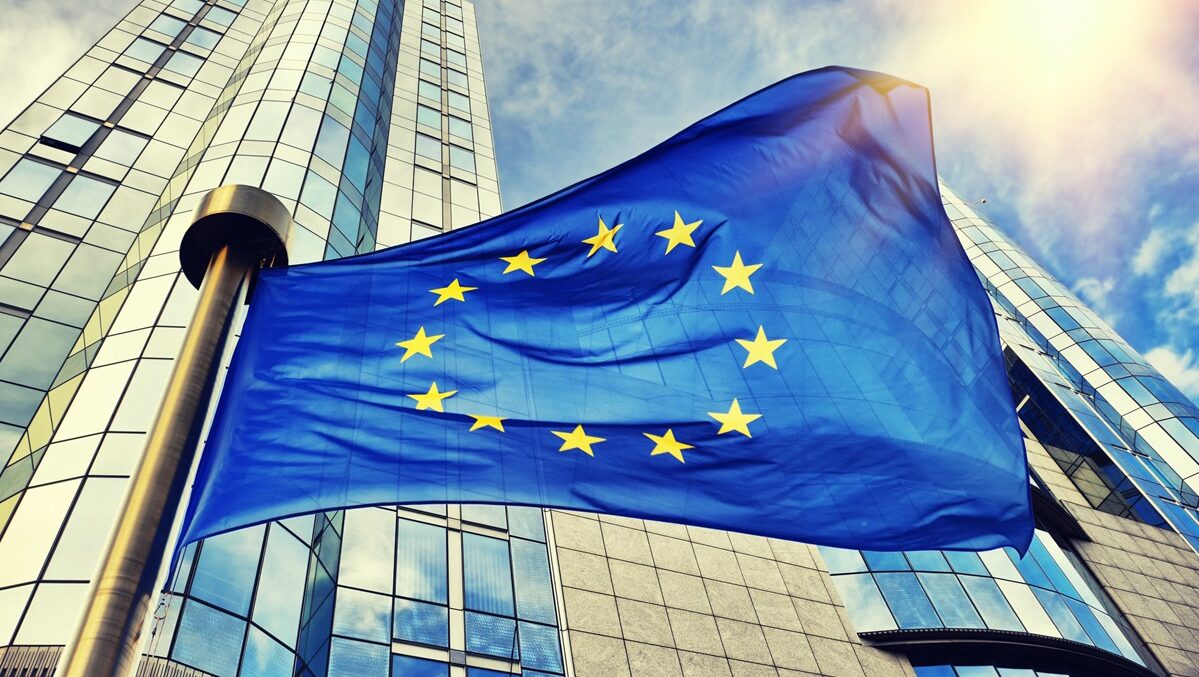
It’s easy for politicians to make unrealistic promises. Indeed, without a healthy skepticism on the part of the public, they can grow like weeds. In the world of digital policy, the European Union’s Digital Markets Act (DMA) has proven fertile ground for just such promises. We’ve been told that large digital platforms are the source of many economic and social ills, and that handing more discretionary power to the government can solve these problems with no apparent side effects or costs.
These promises were based on “questionable, conclusory, and unsubstantiated” assumptions about how digital markets work, what consumers want, and how industry would respond—sometimes, despite warnings and contradicting evidence as to the necessary tradeoffs.
It reminds me a bit of “cakeism,” a phrase that became popular during debates over the United Kingdom’s departure from the European Union. Cakeism embodied the idea that the UK could leave the single market it shared with its largest trading partner, while also increasing trade with that partner, as well. The problem, as many warned at the time (and most can clearly see today), is that you can’t have your cake and eat it too. There are tradeoffs inherent to policy decisions.
So what happens when the DMA’s assumptions prove false, and those promised sunlit uplands fail to materialize?
Realistic Expectations
The DMA’s proponents made a lot of promises. They said this new regulation would usher in a new era of fairness and contestability in Europe’s strengthened digital single market, creating more innovation, more accessibility, more opportunity, more growth, lower prices, higher quality, safer services, more privacy, more control, more choice, more European tech rivals, less inequality, better-protected kids, and a stronger democracy, and all without any legal uncertainty.
A person with a healthy degree of skepticism might question whether a single policy instrument could legitimately deliver on these promises. Or they might at least ask: “what’s the catch?” The large tech companies targeted by the law as “gatekeepers” pointed to a host of unintended consequences, but these were generally dismissed by the legislation’s proponents as “myths.” It was assumed the companies were exaggerating, at best.
“You can have your cake and eat it too,” some seemed to say. We were promised that the “DMA will never prevent any innovative technological company to develop and introduce new services to its users,” and that “any online search engine provider may very well continue offering other digital services.”
Gatekeepers cautioned about the security risks that some of the DMA’s data-access and interoperability requirements would engender. They also generally downplayed any possible positives, noting that their services were two-sided markets that required careful balancing, that changes benefiting one side might disadvantage others, and that users, in fact, already enjoyed integrated, easy-to-use, curated, and personalized services. These were the conditions that made those companies’ services popular in the first place.
Benedict Evans, a well-known tech analyst, likes to refer to the three “nos” of the tech-policy response. The first “no” comes in response to policy changes that are merely inconvenient, the second as a warning against significant unintended consequences, and the third because the requested changes are, by any realistic measure, impossible. Many European policymakers thought the tech industry’s response to the DMA was largely just the first of these “nos,” and acted accordingly. “Nerd harder,” they seemed to say, “you’ve got all the resources in the world; surely, you can solve for that.”
Rubber Meets the Road
Europeans have been experiencing the heartbreak of broken promises ever since March 7, when the DMA’s conduct obligations kicked in. A number of the changes, like the dis-integration of services, make these services less user-friendly. Some business-user groups have found that the changes forced tradeoffs that have left them worse off. For other changes, the longer-term effects have yet to reveal themselves.
For many, the first most obvious change was that Google’s search results were missing useful links. Microsoft also removed its information units from LinkedIn. While perhaps helpful for competitors, these changes have degraded the European user experience. Users of Google Maps, in particular, are complaining and sharing workarounds. It hasn’t helped direct suppliers either. They used to get free traffic from these information units, but are now complaining that the new “fair” ranking methods mean less opportunities for them, and more for intermediaries and comparison-shopping services.
These “intermediary” businesses still aren’t happy, of course. They’ve been demanding more and more from European enforcement since 2018, and are now asking for quotas for guaranteed free traffic from designated services. The tradeoff between the interests of some user groups and others only becomes more apparent.
With respect to alternative app distribution, it seems that the first alternative app store is a haven for piracy, security vulnerabilities, and fraud. Despite policymakers’ assumption that gatekeepers’ steps to protect ecosystem participants were an “aberration to democracy,” the reality is that even competitors like Microsoft have adopted Apple’s curated app-distribution model for security and performance benefits.
Despite the General Data Protection Regulation (GDPR), platforms still need to be able to protect against privacy and security risks. National governments have also recognized the risks of alternative app distribution. You’d think the European Parliament would be more sensitive, as well, at a time when the phones of European Parliament officials have been targeted by spyware. Meanwhile, Executive Vice-President Margrethe Vestager continues to tell the same Parliament that these concerns are “complete nonsense.”
As for browser-choice screens, they have given rivals significant installation jumps, including as much as a 164% increase for Opera and a 250% increase for Aloha. But does this confirm the European Commission’s supposition that users demand to be freed from the shackles of default settings, or merely that “mandated nagware” will inevitably drive some to try alternatives? The important question is, will users continue to stick to these services, or eventually return to the familiar market leaders? And what conclusions will regulators draw from these changes?
Confronting Assumptions, Facing Reality
It could be that the DMA proves unpopular with end users, that only niche hobbyists are interested in interoperability with third-party services, and that only the largest business users (like Epic, Match, and Spotify) will benefit. The new rules could make gatekeepers’ ecosystems less convenient and easy-to-use, destroying the brand promise, and limiting their potential for the vast majority of European business users. Indeed, the DMA could make the overall pie smaller, or even result in the loss of new artificial-intelligence services or delays to pro-competitive rivalry among the platforms.
All these changes also create an opportunity for Chinese rivals, who are poised to enter the European market with a unique value proposition: an integrated digital ecosystem that “just works” without annoying “nagware” or the requirement to give rivals gratuitous access. We’ve already seen these Chinese rivals making their demands known. So does it really make sense to make things worse for European consumers in the short term, and to drive demand to Chinese alternatives, all for a hypothetical future where this will stimulate European rivals to make things better for consumers in the long term?
The first step toward correcting this is to recognize that these negative consequences are real. Rather than some kind of malicious “noncompliance,” much of what we are seeing is core to the inherent tradeoffs that industry warned about at the beginning. They are the consequence of ignoring the second of Benedict Evans’ “nos.”
The second step involves correcting these assumptions and better understanding the inherent tradeoffs of product-design decisions and the demands of the modern consumer. The internet has come a long way from the early 2000s, when it was dominated by hobbyists and hackers who grew up in a world of command prompts, custom modding, and root access.
Unfortunately, many of those in policy circles still give disproportionate weight to the opinions of those hobbyists, who would be happy to return the internet to a friction-filled state where their technical skill gives them a sense of superiority. The reality is that an internet used by more than five billion people cannot operate on the assumptions that work for an internet of only 100 million people. That’s the reality of Benedict Evans’ third “no.”
Another hard reality is that, regardless of how much money they make in other areas, businesses can’t be expected (or, in reality, forced) to offer loss-making services in Europe. While some policymakers may have preferences as to what they would enjoy or be willing to pay for, many users might weigh things differently. Besides the difficult question of what is an appropriate price, even if the price is low, a large portion of European users might still prefer the free ad-funded option.
That doesn’t mean these people are wrong; just that they value the services differently. In any case, insisting that companies offer services for free, but removing their ability to fund those services with advertising, is pretty close to the digital version of eating one’s cake and expecting to have it, too.
With its open DMA investigations, we’ll now see whether the Commission is willing to accept these realities, and to adjust its enforcement accordingly, or whether it thinks it can ignore inherent tradeoffs, force end users to change their behavior, and force companies to defy market realities. One hopes the Commission will choose the more proportionate approach. The alternative is that both end users and the vast majority of business users may end up suffering some very predictable negative consequences.




